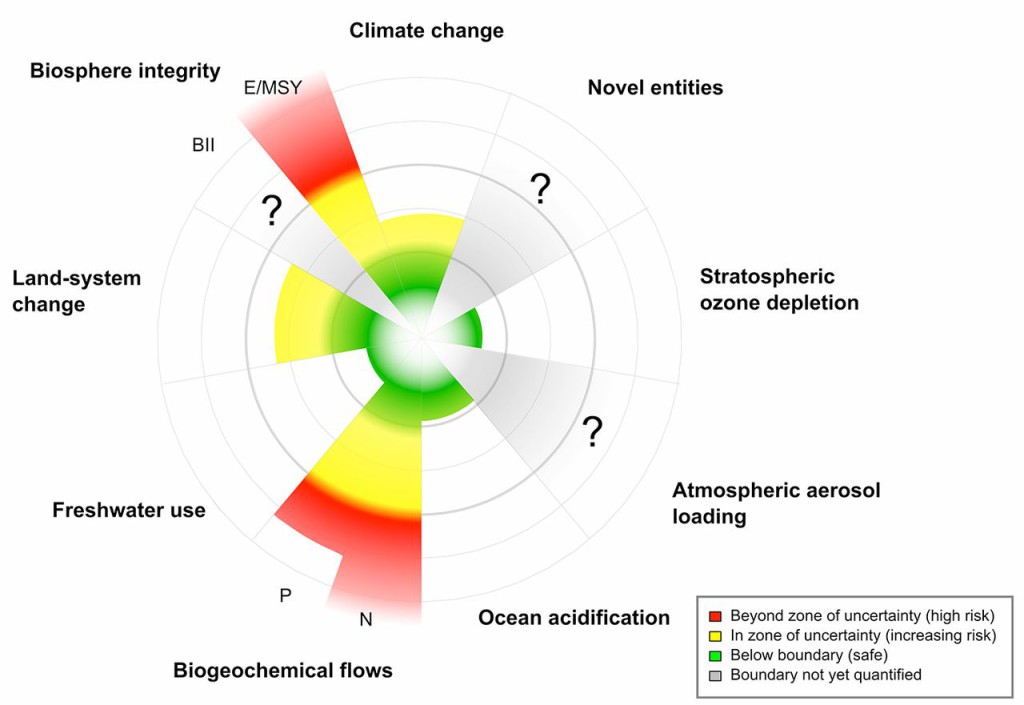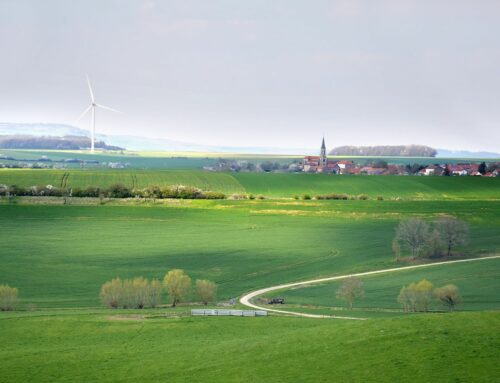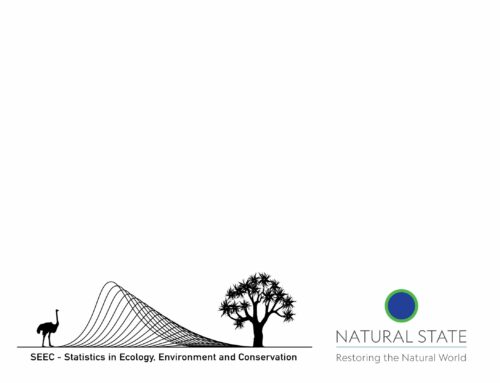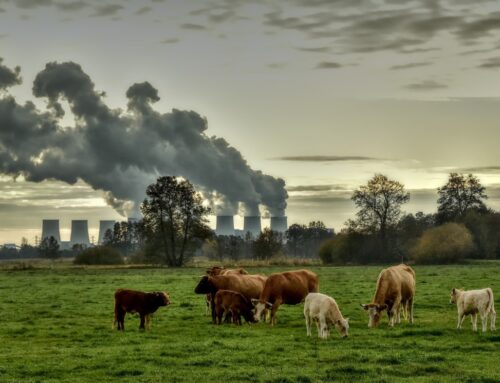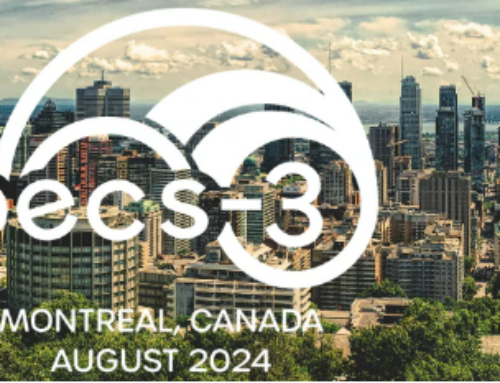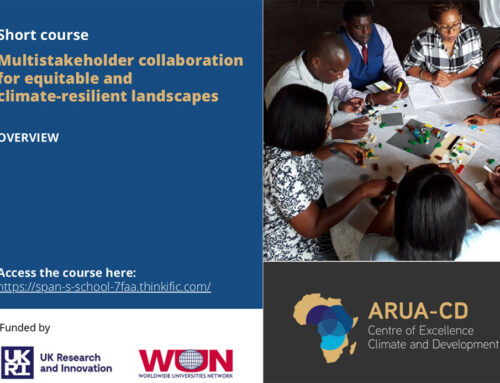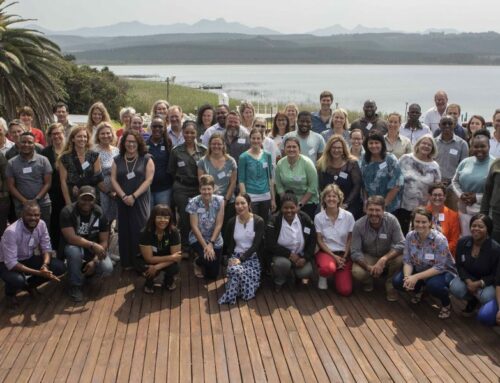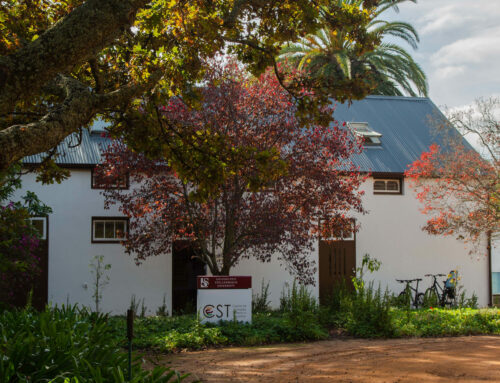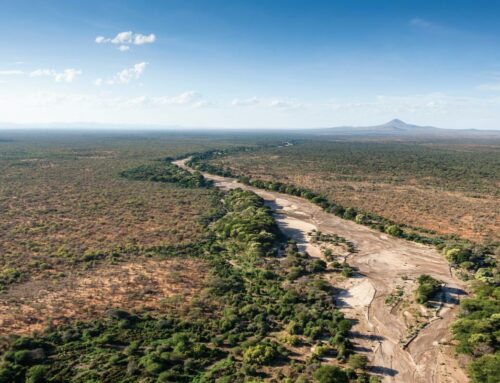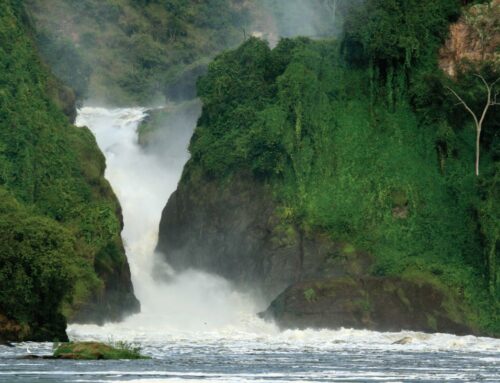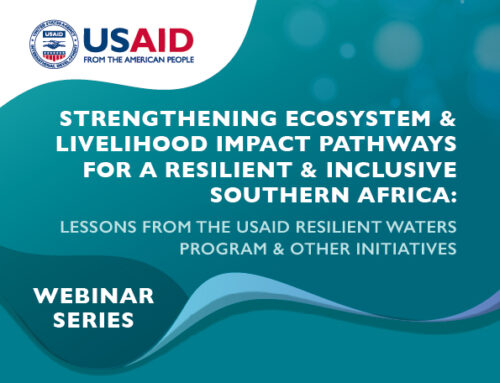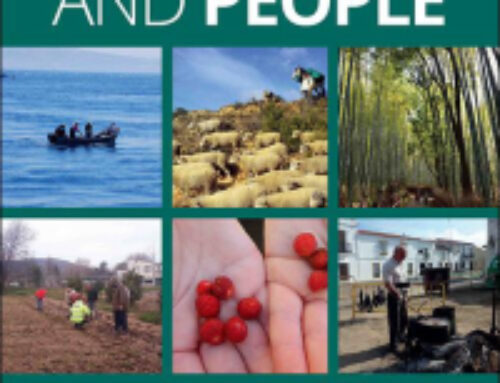An international team of researchers, including SAPECS-affiliated scientists Reinette (Oonsie) Biggs and Belinda Reyers, have updated the planetary boundaries that define a “safe operating space” for humanity on Earth.
This work builds on research published in 2009, which identified nine processes and systems that regulate the stability and resilience of the entire Earth System, thus providing the favourable conditions upon which our societies depend. However, these nine planetary processes have thresholds or tipping points (“boundaries”) relating to human-induced changes to the environment. Crossing these thresholds can have dire consequences for human development, which means that we should aim to stay within the “safe operating space” outlined by the planetary boundaries. Yet in the original article, three of the nine boundaries were reported to have already been crossed, these being: climate change, rate of biodiversity loss and interference with the nitrogen cycle.
The updated version of the planetary boundaries framework now adds a fourth boundary that has been surpassed as a result of human activity, namely that of land-system change. The complete list of boundaries is as follows:
1. Climate change
2. Change in biosphere integrity (biodiversity loss and species extinction)
3. Stratospheric ozone depletion
4. Ocean acidification
5. Biogeochemical flows (phosphorus and nitrogen cycles)
6. Land-system change (for example deforestation)
7. Freshwater use
8. Atmospheric aerosol loading (microscopic particles in the atmosphere that affect climate and living organisms)
9. Introduction of novel entities (e.g. organic pollutants, radioactive materials, nanomaterials, and micro-plastics)
For more information, visit the Stockholm Resilience Centre’s website on Planetary Boundaries Research, watch this Ted Talk by Johan Rockström, or take part in this Planetary Boundaries and Human Opportunities free online course.
Reference:
, K, , , , , , , , , , , , , , , ,


